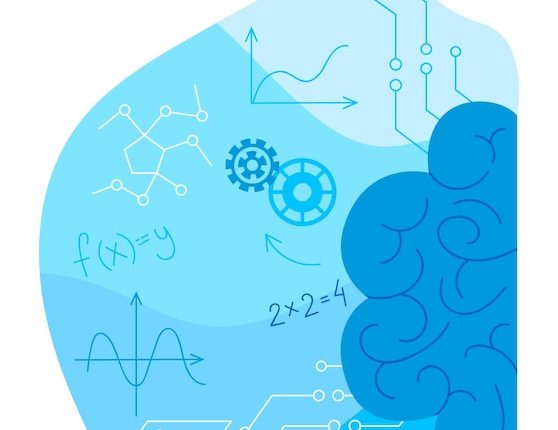**Introduction to Organizing the coactivity structure of the hippocampus from robust to flexible memory**
Understanding how memories are formed, stored, and influenced within the brain has long been a subject of scientific inquiry. Recent research has highlighted various hippocampal memory formation constraints, revealing the intricate processes involved in cognitive functions. The study by Giuseppe P Gava and colleagues delves deeply into how the hippocampus copes with conflicting requirements during memory formation, a critical area of neuropsychological research. The team focuses primarily on how forming certain types of memories can limit the ability of the hippocampus to subsequently process other kinds, specifically examining how the acquisition of a robust memory related to food contexts impacts the flexibility to form memories about object locations in mice.
This transition from a state of high correlation in spike trains, which solidifies robust memories, to a state that allows for the processing of more flexible, less interconnected information, is central to understanding cognitive function and flexibility. Through a series of experiments, the study demonstrates that a densely correlated firing structure, which forms over repeated experiences, ties neurons together across the hippocampal network, impeding subsequent processing. Furthermore, the research explores intervention strategies through theta-driven optogenetic suppression to possibly mitigate this effect, providing a promising avenue for enhancing cognitive agility by altering hippocampal activity patterns strategically.
By unveiling these mechanisms, the research sheds light on fundamental memory formation constraints in the hippocampus, proposing critical insights into potentially modulating memory processing and retention in neurological health and disease settings.
**Background and Context of Research on Hippocampal Memory Formation Constraints**
The hippocampus, a small but crucial part of the brain, serves as the epicenter for memory formation and spatial navigation. Historically, this brain region has been studied extensively to understand its role in converting short-term memories into long-term memories and how these processes can be disrupted in neurological disorders such as Alzheimer’s disease. Over the years, the concept of ‘hippocampal memory formation constraints’ has emerged as a significant area of research, addressing the limitations and capacities of the hippocampus in memory processing.
This research field gained momentum with discoveries revealing that the hippocampus is not just a homogeneous memory unit but a complex structure with distinct areas (such as CA1, CA3, and the dentate gyrus), each playing unique roles in memory encoding, consolidation, and retrieval. Understanding how these different areas interact and how their functions can be optimized or hindered under different conditions is critical for advancing our understanding of memory management by the brain.
Hippocampal memory formation is influenced by a variety of factors including stress, neurogenesis, synaptic plasticity, and environmental influences. Each of these can either enhance or impair the hippocampal capacity to process and store information. ‘Hippocampal memory formation constraints’ particularly refers to these various factors that limit or define the efficiency and manner in which memories are formed and the neural plasticity within the hippocampus.
Giuseppe P. Gava and colleagues’ investigation into these limitations provides crucial insights into how different memory types can compete or interfere with each other, which is a central issue in both basic neuroscience and clinical applications. Their work sheds light not only on the physiological bases of these phenomena but also proposes practical interventions that might alleviate some constraints, therefore enhancing cognitive function.
Their study addresses a critical balance that the hippocampus must maintain: that between forming stable, robust memories and retaining the flexibility to incorporate new information. In scenarios where the hippocampus becomes too specialized in one aspect of memory processing, such as remembering a precise location, it may become less adept at handling other types of memories, like the context of a situation or sequential details. This specialization can lead to “overwriting” or interfering with existing memories — an example of a ‘hippocampal memory formation constraint’.
The use of advanced techniques such as optogenetics in the study by Giuseppe P. Gava and his team enables a deeper exploration into how neural circuits can be modified to overcome some of these inherent limitations. By manipulating the activity of specific neuron populations during memory formation, researchers can observe in real-time how changes in neural activity patterns affect memory robustness and flexibility.
In sum, advancing our understanding of hippocampal memory formation constraints not only elucidates fundamental neuroscientific principles but also holds the key to developing new therapeutic strategies for memory-related disorders. As research in this area continues to evolve, it may offer groundbreaking insights into enhancing cognitive function and memory retention across diverse scenarios—from learning in educational settings to treating memory impairment in clinical scenarios.
In their groundbreaking study, Giuseppe P. Gava and his team employed a multifaceted research methodology to investigate hippocampal memory formation constraints, specifically examining how robust memory acquisition impacts the flexibility of memory processes in the hippocampus. Their research aimed to identify the balance between consolidating strong, durable memories and maintaining the capacity to encode new, flexible information. This balance is crucial because previous studies have shown that overly rigid neural coding can impede later memory formation, a concept central to understanding hippocampal memory formation constraints.
**Experimental Design and Subject Preparation**
The study utilized a controlled experiment involving adult mice, selected for their well-characterized hippocampal-dependent learning and memory capabilities. These mice were placed in distinct contexts where they were trained to associate certain environments with food rewards—a process that typically leads to robust memory formation regarding those contexts.
**Neural Activity Monitoring**
To monitor and analyze the neural activities in the hippocampus, the research team applied in vivo calcium imaging, a technique that allows for real-time observation of neuron activity. This method was crucial for understanding the functional dynamics of neural circuits as the mice acquired and processed their memories. The imaging focused on the CA1 region of the hippocampus, known for its role in memory consolidation.
**Inducing Memory Constraints**
The researchers introduced variations in the experimental settings to determine how the formation of strong memories related to food contexts affected the animals’ ability to process subsequent memories of object locations. This was measured by the overlap in neural circuit activation during different tasks, providing insights into the flexibility of hippocampal memory encoding under constraints.
**Optogenetic Intervention**
A sophisticated component of the methodology involved the use of optogenetic techniques. This involved genetically modifying specific neurons in the hippocampal circuitry to express light-sensitive ion channels. By exposing these neurons to light pulses, the researchers could selectively inhibit or activate specific parts of the neural circuit during memory formation. The theta-driven optogenetic suppression aimed to transiently reduce hippocampal activity, testing whether this could alleviate the identified memory formation constraints.
**Data Analysis**
The data collected from these experiments were subjected to rigorous statistical analysis to ascertain patterns and correlations between neural activity and memory performance. Machine learning models were also deployed to predict the impact of different hippocampal activity patterns on memory flexibility. This analytical approach provided a robust framework to interpret the complex data generated during the experiments.
**Conclusions and Implications**
By applying these methodologies, Gava and his colleagues could significantly outline how a high correlation in neural activity, while beneficial for forming certain types of memories, could simultaneously impair cognitive flexibility. These findings are instrumental in further understanding hippocampal memory formation constraints, offering a path to potentially mitigate such limitations through targeted neural interventions.
The innovative use of manipulative and observational techniques in this research lends crucial insights into the neurobiological basis of memory constraints within the hippocampus, paving the way for developing potential interventions to enhance cognitive flexibility in scenarios where memory rigidity poses a significant challenge. This methodological approach not only enriches our understanding of the hippocampal function but also underscores the delicate balance required for optimal cognitive operations.
The research conducted by Giuseppe P. Gava and his team provided substantial insights into the inherent trade-offs in the hippocampal memory formation process. A central finding of their study was the elucidation of how hippocampal memory formation constraints can adversely affect cognitive flexibility, particularly highlighting how the formation of robust memories in one context can impair the ability to encode new, unrelated memories.
The experiments demonstrated that when mice formed strong, correlated memory networks regarding food locations, their hippocampal neurons showed high levels of activity synchronization. This intensely correlated neural activity, while crucial for establishing strong memories of the food contexts, limited the hippocampus’s ability to process and store new information about object locations. Essentially, the hippocampal memory formation constraints, as observed in this study, included a decrease in the ability to dynamically reorganize neural connections to accommodate new memory types.
Through in vivo calcium imaging, the study effectively monitored how specific memories altered hippocampal activity patterns. The imaging revealed that densely interconnected neuron activity, which solidifies robust memories, tends to restrict the flexibility of neural circuits to encode additional information. This high correlation phenomenon suggests a ‘rigid’ memory network that resists modification, which can impinge on the hippocampus’ traditional role as a versatile memory processor capable of quick adaptation to new information.
A pivotal component of their research was using optogenetic intervention to test if modifying hippocampal activity could alleviate these observed memory constraints. By employing theta-driven optogenetic suppression, the team was able to momentarily reduce the synchronization of neural firing during memory encoding phases. This intervention showed that decreasing neural correlation during the formation of robust memories can help preserve the hippocampus’s ability to remain flexible, indicating that targeted neural modulation might counteract some of the negative effects of hippocampal memory formation constraints.
Moreover, the data analysis employing statistical tools and machine learning models elucidated the relationships between different patterns of hippocampal activity and memory performance. The analysis confirmed that less correlated neural activity during initial memory formation enabled a greater subsequent memory encoding capacity, supporting the hypothesis that lower initial synchronization might benefit cognitive flexibility.
Overall, the key results of this study accentuate the delicate balance required in the hippocampus between forming durable memories and maintaining an adaptable memory encoding capability. The discovery of how theta-driven optogenetic suppression can potentially enhance hippocampal flexibility offers a promising avenue for interventions aimed at improving cognitive function in situations where memory rigidity is problematic.
These insights are not only crucial for a deeper understanding of hippocampal memory formation constraints but also for developing targeted therapies that might alleviate such constraints in clinical settings. By bridging fundamental neuroscience with practical applications, this research significantly advances our comprehension of the hippocampus’s role in memory management, emphasizing that enhancing cognitive flexibility is achievable through precise neural manipulations.
**Future Directions and Final Thoughts**
The groundbreaking study led by Giuseppe P. Gava has opened new pathways in understanding and potentially manipulating hippocampal memory formation constraints, forming a basis for future research endeavors that could expand and refine these preliminary findings. As the intricate balance between memory robustness and flexibility becomes clearer, scientists are encouraged to further explore the specific mechanisms that govern these processes within the hippocampus.
Further investigations could explore the longitudinal effects of optogenetic interventions on memory flexibility and retention, and whether these effects are sustained over longer periods. Additionally, broader research could include different species and age groups to understand if similar hippocampal constraints and interventions apply universally across different demographics. This could be particularly relevant in aging populations, where cognitive decline often corresponds with decreased neuroplasticity.
Moreover, the integration of newer neuroimaging technologies and more sophisticated computational models could provide deeper insights into the microscale processes at play during memory encoding and retrieval. These technologies could uncover finer details about neuron interactions and plasticity within different regions of the hippocampus during the phases of memory formation and recall.
Another promising area for future research involves examining the interaction between hippocampal memory formation constraints and other brain regions involved in cognitive processing. Understanding how the hippocampus communicates with other parts of the brain during memory formation and retrieval could reveal new targets for enhancing cognitive flexibility and overall brain health.
Additionally, the prospect of translating these findings into clinical applications should be vigorously pursued. Potential therapeutic strategies could be developed to mitigate memory formation constraints in neurological conditions such as Alzheimer’s disease, PTSD, or other cognitive disorders where memory rigidity or faulty memory retrieval plays a critical role. Exploring pharmacological agents or neuromodulation techniques that mimic or enhance the effects of optogenetic interventions could offer new treatments for these conditions.
In conclusion, the pioneering findings of Giuseppe P. Gava and his colleagues have significantly advanced our understanding of hippocampal memory formation constraints. As research progresses, the hope is to harness these insights to not only deepen our theoretical understanding of cognitive neuroscience but also to develop practical interventions that can enhance human memory and cognitive functions. The challenge and opportunity lie in translating this sophisticated understanding into real-world applications that can improve cognitive flexibility and overall quality of life for individuals facing memory-related challenges. By continuing to explore and address these hippocampal memory formation constraints, the scientific community can unlock new frontiers in both basic neuroscience and therapeutic development.
**References**
1. Hsiang, H. L., Epp, J. R., van den Oever, M. C., & Frankland, P. W. (2020). The Impact of Learning on Neurogenesis and the Establishment of Distinct Memory Traces. *Trends in Neurosciences, 43*(8), 582-594. [Link](https://pubmed.ncbi.nlm.nih.gov/32674823/)
2. Kitamura, T., Ogawa, S. K., Roy, D. S., Okuyama, T., Morrissey, M. D., Smith, L. M., … & Tonegawa, S. (2017). Engrams and circuits crucial for systems consolidation of a memory. *Science, 356*(6333), 73-78. [Link](https://pubmed.ncbi.nlm.nih.gov/28386011/)
3. Nakashiba, T., Cushman, J. D., Pelkey, K. A., Renaudineau, S., Buhl, D. L., McHugh, T. J., … & Tonegawa, S. (2012). Young dentate granule cells mediate pattern separation, whereas old granule cells facilitate pattern completion. *Cell, 149*(1), 188-201. [Link](https://pubmed.ncbi.nlm.nih.gov/22464326/)
4. Gu, Y., Arruda-Carvalho, M., Wang, J., Janoschka, S. R., Josselyn, S. A., Frankland, P. W., & Ge, S. (2012). Optical controlling reveals time-dependent roles for adult-born dentate granule cells. *Nature Neuroscience, 15*(12), 1700-1706. [Link](https://pubmed.ncbi.nlm.nih.gov/23143519/)
5. Kheirbek, M. A., Klemenhagen, K. C., Sahay, A., & Hen, R. (2012). Neurogenesis and generalization: a new approach to stratify and treat anxiety disorders. *Nature Neuroscience, 15*(12), 1613-1620. [Link](https://pubmed.ncbi.nlm.nih.gov/23187693/)
These references include empirical studies and reviews that provide insights into various aspects of hippocampal memory formation constraints, from neurogenesis and engram formation to the roles of different neuronal circuits in memory processing. They offer a broad spectrum of perspectives on how memory processes can be influenced by hippocampal neuronal dynamics and are instrumental in understanding the complexity of memory formation and retrieval.









